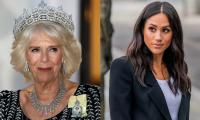Pakistan’s economy is virtually down on its knees thanks to the incompetence of the present government’s IMF-driven economic team. The PTI government inherited an economy with GDP growth rate of 5.5 percent in 2017-18 and brought it down to 1.9 percent in 2018-19 as against the targeted growth rate of 6.2 percent.
The sharp decline in the GDP growth rate combined with the massive devaluation of the Pakistan rupee lowered Pakistan’s GDP from $315 billion in 2017-18 to $283 billion in 2018-19, an unprecedented loss of $32 billion. During the current financial year, the GDP is likely to decline by 0.38 percent, lowering it further to $264 billion. The decline in GDP has caused a steep fall in Pakistan’s per capita income from $1652 in 2017-18 to $1455 in 2018-19. It is likely to decline further to $1355 during 2019-2020, which would be lower than the per capita income in 2013-14 ($1388), according to the Pakistan Economic Survey, 2019-20.
The unemployment level, which was estimated to be 5.8 percent in 2017-18, rose to 10.8 percent in 2018-19 and may have risen to 14.7 percent during the current financial year, according to estimates by the Economist Intelligence Unit, pushing millions of people below the poverty line. The proportion of people below the poverty line, which was expected to be about 24.3 percent before the onset of the coronavirus, may have risen to over 30 percent subsequently. The life of the people was made increasingly miserable by a high inflation rate of 11.2 percent in 2019-20 as against the inflation rate of about 4.7 percent in 2017-18.
Pakistan’s total debt and liabilities increased from Rs29.8 trillion on June 30, 2018 to Rs42.82 trillion by end March, 2020. In other words, the present government in less than two years increased the debt burden by the same amount as the preceding PML-N government had done in five years.
This is the picture of an economy in deep trouble. Whereas the coronavirus has definitely aggravated our economic problems, the present government’s flawed economic policies had already set in motion the process of the rapid worsening of our economic woes. The only achievement to the credit of the present government is a substantial reduction in the current account deficit which was estimated to be $19.1 billion in 2017-18 mainly due to the high level of our imports amounting to $55.6 billion as against the low level of exports valued at $24.7 billion in that year. Unfortunately, the present government, after assumption of power in August, 2018, relied primarily on the monetary policy for correcting the current account deficit instead of using a judicious combination of fiscal, monetary and trade policies.
Accordingly, the rupee to dollar rate was raised from about 122 in August 2018 to 164 by the end of June, 2019 in the hope that this massive devaluation of the Pakistan rupee would help increase exports and reduce imports substantially to bring the current account into balance. The devaluation of the Pakistan rupee did lower the imports to $51.9 billion, a reduction of just $3.8 billion. But it failed to increase exports which in fact marginally declined to $24.3 billion in 2018-19 primarily because of severe supply side constraints. Consequently, the current account deficit declined by just $5.7 billion during the last financial year.
In the period from July 2019 to March, 2020, imports were recorded at $32.9 billion as against $39.3 billion during the corresponding period a year earlier, thus maintaining their downward trend. The exports during the first nine months of the current financial year remained unchanged at about $18 billion. Consequently, the current account deficit has declined further substantially during the first nine months of the outgoing financial year.
Thus, the welcome reduction in the current account deficit has been brought about on the back of a sharp reduction in imports while exports have remained stagnant despite the massive devaluation of the Pakistan rupee over the past two years. In the process, as explained above, the country has paid a heavy price. The poor and the downtrodden in the country have suffered the most from the PTI government’s flawed economic policies. Just for the reduction of $3.8 billion in our imports in 2018-19, the country’s GDP was lowered by $32 billion and the people had to suffer from unbearably high levels of unemployment, inflation and poverty! The process has continued during the current financial year with similar results.
The same or even greater reduction in imports could have been achieved by imposing higher duties on a selective basis on imports of non-essential consumer goods and raw materials for non-essential consumer goods. Had this approach been followed, the proceeds from the higher duties on imports could have been used to increase exports through appropriate financial incentives and supportive facilities. This should have been combined with fiscal and monetary measures to reduce domestic consumption of non-essential goods with the objective of raising substantially our national saving and investment rates to enhance the productive capacity of the country and accelerate its GDP growth rate.
The higher a country’s national investment rate, the higher would be its economic growth rate, other things remaining the same. For financing a high investment rate, the national savings rate must also be raised correspondingly to avoid incurring current account deficits which reflect the difference between national investments and national savings. The main reason for Pakistan’s slow GDP growth rate is its low saving rate which was only 10.8 percent in 2018-19. Ideally, we should be saving and investing at least about 25 percent of our GDP to be able to sustain a high GDP growth rate of 7-8 percent without running high levels of current account deficits.
The budget for 2020-21, which does not even pretend to make a move in that direction, is therefore a source of great disappointment. Unsurprisingly, whereas the present government has envisaged the growth rate of 2.3 percent for 2020-21, the World Bank’s estimates indicate that the GDP growth rate would be as low as 0.9 percent – raising further the unemployment and poverty levels in the country.
The writer is a retired ambassador and president of the Lahore Council for World Affairs. Email: javid.husain@gmail.com
A representational image showing residents walking at a wholesale market in Karachi. — AFP/FileOnce again there is...
A representational image showing late Pakistani human rights activist and Supreme Court lawyer Asma Jahangir. —...
A representational image showing a security personnel sanding guard beside a ship carrying containers at Gwadar port....
A health worker administers polio vaccine drops to a child during a door-to-door polio vaccination campaign in Lahore,...
Armed militants of the banned Tehreek-e-Taliban Pakistan pose for a photograph in Orakzai Agency. —...
An aeroplane of the national flag carrier of Pakistan is seen in this file photo. — AFPWhile Pakistan considers...







